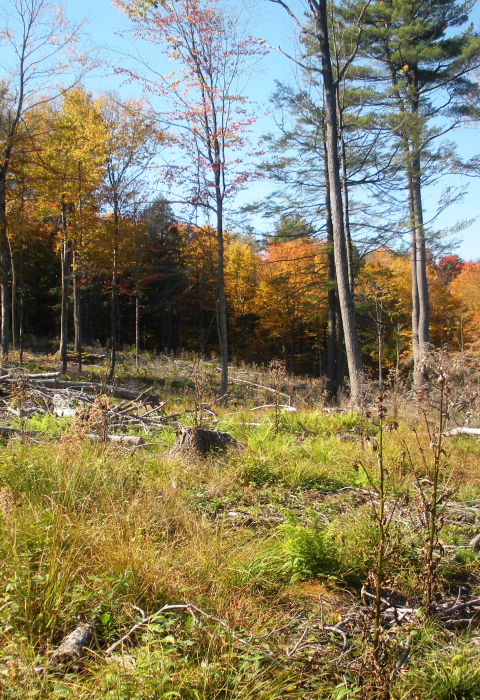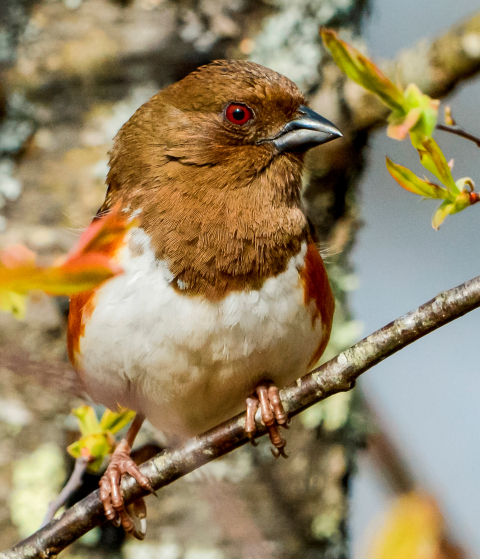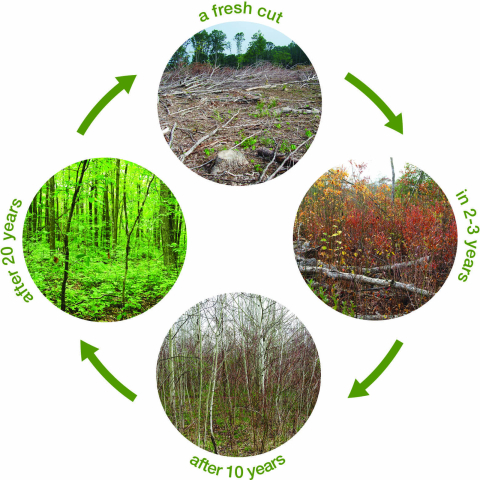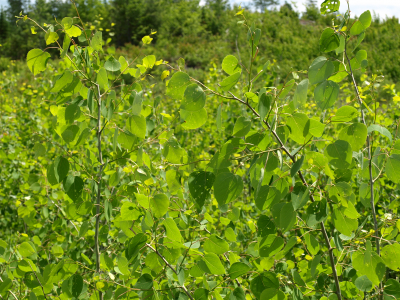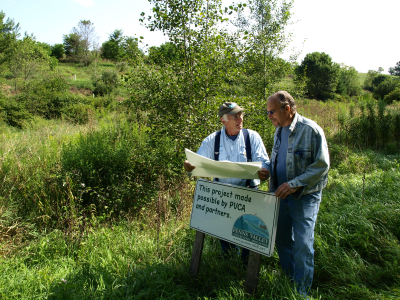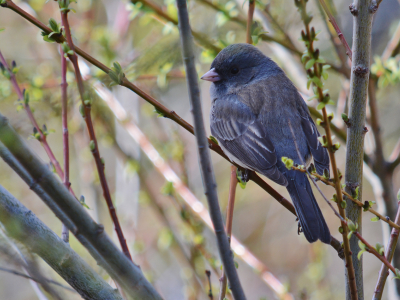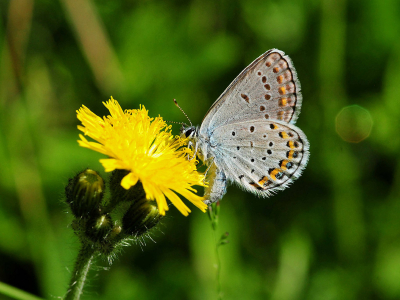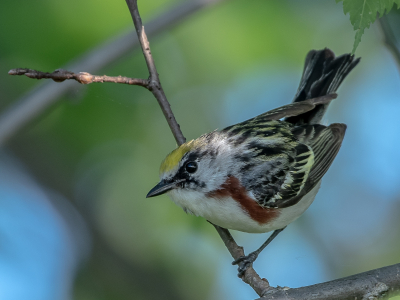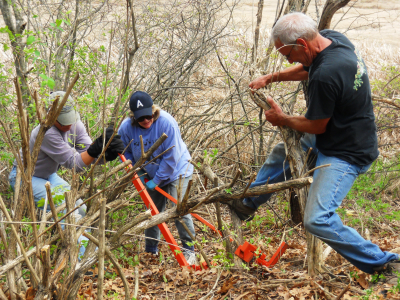Conservationists and private landowners use timber harvests to create or refresh young forest for wildlife. Logging provides jobs and yields wood products that boost local and regional economies. Carefully sited and carried out, a timber harvest can improve a forest's overall health by adding a different-aged component to a woodland that has trees of only one age.
Logging can also lead to the presence of different species of trees and shrubs, including light-loving, short-lived ones. A woodland that includes diverse trees will be more resilient to diseases, insect pests, and other stressors than a forest with only a few kinds of trees.
Timber Harvests Large and Small
Landowners can use tree felling or timber harvesting to create forest openings (2 acres or less), patch cuts (at least 5 acres), or extensive clearcuts (10 acres and larger).
Different percentages of trees can be removed from a forest stand. Biologists and habitat managers may recommend clearcutting, or "even-aged" harvesting, in which most or all of the trees are taken. Or they may suggest cutting a few trees here and there, or something in between.
The percentage of forest canopy that should be thinned to provide early successional habitat depends on the kind of wildlife that landowners or land managers want to help or attract. Other factors to consider are slope, soil moisture and fertility, the presence of invasive plants or abundant deer whose feeding may slow or prevent the growth of young trees and shrubs, and whether an economic return is desired.
It's important to consult with a certified forester or a state or federal biologist experienced in tailoring a timber harvest to help wildlife.
Mimicking Natural Disturbance Events
A timber harvest can act like a natural disturbance, such as a flood, storm, or wildfire, by removing some, many, or most of the trees on a site. Seed-tree cuts and shelterwood cuts take some trees, while a clearcut temporarily sets the age of the forest back to zero, spawning a new young forest that provides habitat to wildlife that requires dense cover for breeding and raising young.
At first, a timber harvest looks messy, like a bad haircut. But in just one growing season, the stumps, root systems, nuts, and seeds of harvested trees send up thousands of new little trees. Light reaching the ground spurs the growth of low plants such as pokeweed, blueberries, wild strawberries, blackberries, grasses, sedges, and wildflowers that pollinating insects avidly visit.
Soon the regrowing young forest provides abundant food (fruits, seeds, insects, and small mammals) and thick hiding cover for a tremendous range of wildlife, including turtles, birds, and larger mammals – both common species that use a broad range of habitats, and rare kinds that don't live anywhere other than young forest and shrubland.
The publication Wildlife in Your Young Forest is a mini-field guide presenting the different wildlife that may show up following a clearcut harvest.
"In Theory and in Practice: What Makes a Good Clearcut?" is an informative article about clearcutting in Northern Woodlands magazine.
Educate Yourself Before Cutting
- Don’t just sell your trees to a logger who may come knocking at your door. Engage a certified forester to develop a forest management plan (often referred to as an FMP). Natural resources agencies in most states have private lands foresters or biologists who can provide excellent advice. In many cases, a consultation will be free.
- Consider the possible presence of invasive shrubs or trees that could take over a site following a timber harvest, or overabundant white-tailed deer that could browse down young trees and inhibit forest regeneration.
- To prevent erosion, avoid harvesting timber on steep slopes. Don’t cut trees that cast protecting shade on vernal pools. Protect habitats of rare or endangered animals and plants. If your neighborhood already has ample young forest, consider simply letting your trees grow old.
- The Vermont Agency of Natural Resources developed a series of Landowner Guides to a Successful Timber Harvest that apply throughout the Northeast. The five publications cover these subjects: Overview, Wildlife, Water, Economics, and Working with Foresters and Loggers.
- Concerned about carbon storage and sequestration? Wood products store carbon for many years. This webpage offers more information.
Young Forest Doesn't Last Forever
Remember, young forest is an ephemeral habitat. You can’t just make it and have it remain in place forever. Forests regrow rapidly in the well-watered Northeast. That’s why conservation professionals and private landowners continue to create young forest and shrubland for wildlife.

